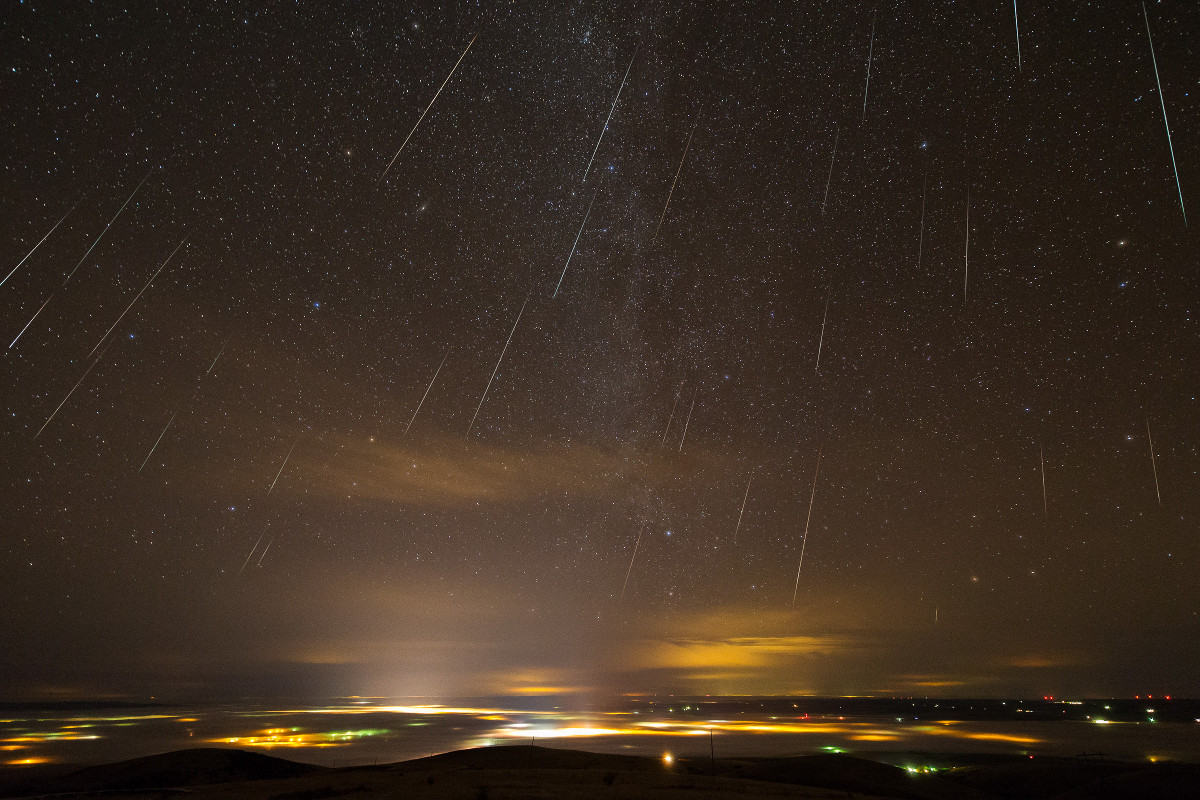When and where to see Geminids meteor shower in 2016
(VNF) - In 2016, the Geminids are expected to peak on the night of December 13th and early morning hours of December 14th.
The Geminids - along with the Quadrantids, which are seen in January - are the only meteors that do not originate from a comet.
 |
Geminids over Pendleton. (Image credit: Thomas W. Earle)
The best time to view the shower, which is considered to be one of the most prolific meteor showers of the year, is after dark on December 14th. Peak time is usually around 2am, wherever you are.
So you can start looking from the night of Monday, December 12th, and keep looking up to the morning of Thursday, December 15th.
Unfortunately, we will also have a Supermoon Cold Moon on December 14th and its white glare will make the skies less dark, thus reducing the chances of spotting any shooting stars streaking past.
The Geminids are a meteor shower caused by a three-mile-wide asteroid called 3200 Phaethon which is orbiting the sun.
As the asteroid gets very close to the sun, the intense heat makes its rocky surface crack apart. Pieces fly off and trail behind it.
And then, every December, the Earth crosses the orbital path of the asteroid so this trail of space rubble collides with our atmosphere. The rock and dust then burn up and creates streaks of light.
The Geminids were first recorded in 1862 - very recent compared with other shooting stars - and seem to be getting more intense every year.
The Geminid meteor shower can be annually observed between December 4th and December 17th, with its peak activity being around December 14th.
The shower owes its name to the constellation Gemini from where the meteors seem to emerge from in the sky.They are quite slow-moving, travelling at around 22 miles per second, so they are usually easy to spot.
The Geminids are considered to be one of the more spectacular meteor shower during a year, with the possibility of sighting around 120 meteors per hour at its peak.
The Geminids can be observed from locations all around the world.
While it is not necessary to look in a particular direction to enjoy a meteor shower, astronomers suggest looking towards the south to view the Geminids./.
( Compiled by VNF )
Recommended
 Handbook
Handbook
Vietnam Moves Up 8 Places In World Happiness Index
 Handbook
Handbook
Travelling Vietnam Through French Artist's Children Book
 Multimedia
Multimedia
Vietnamese Turmeric Fish among Best Asian Dishes: TasteAtlas
 Handbook
Handbook
From Lost to Found: German Tourist Thanks Vietnamese Police for Returning His Bag
 Handbook
Handbook
Prediction and Resolution for the Disasters of Humanity
 Handbook
Handbook
16 French Films To Be Shown For Free During Tet Holiday In Vietnam
 Handbook
Handbook
Unique Cultural and Religious Activities to Welcome Year of the Snake
 Handbook
Handbook
